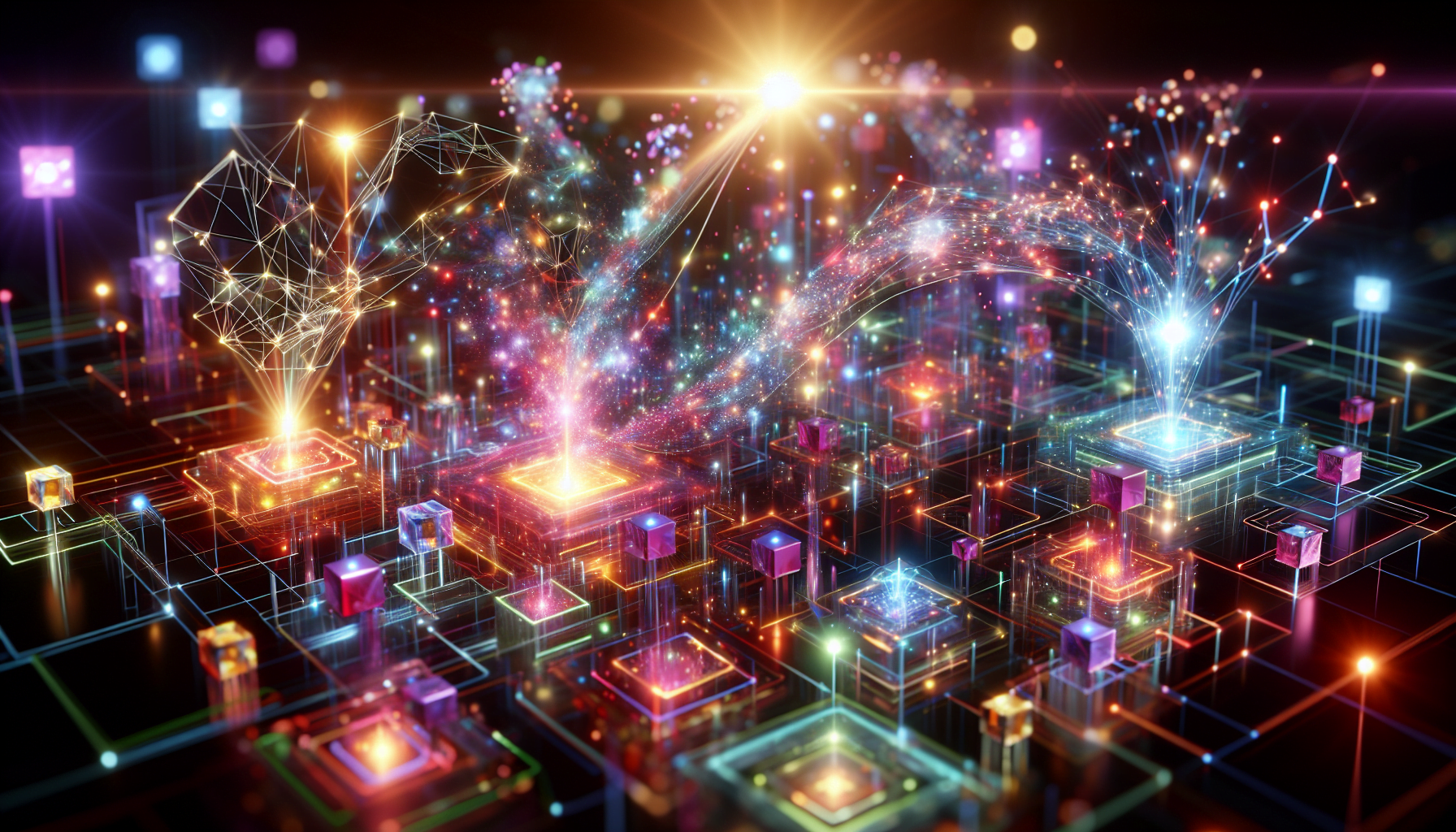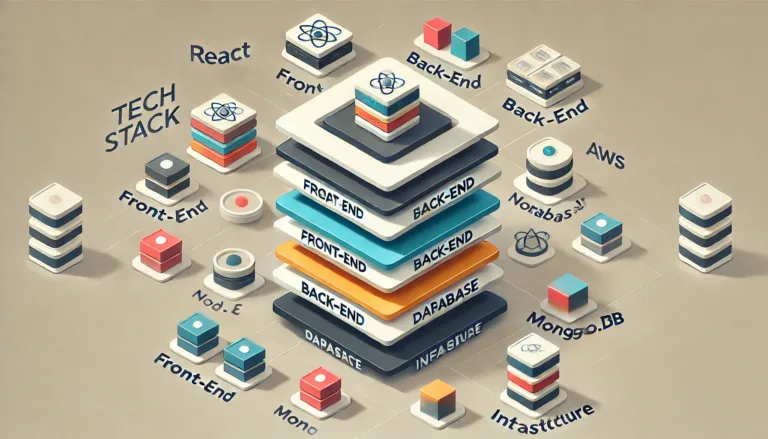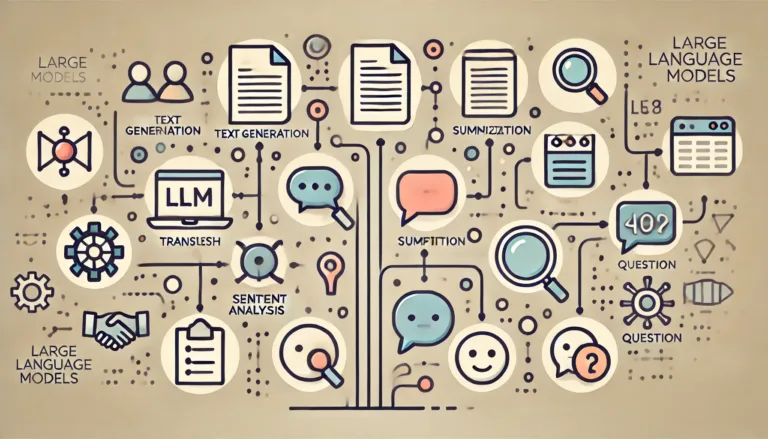Getting the Hang of AI Algorithms
What’s the Deal with AI Algorithms?
AI algorithms are like the rulebooks for machines, teaching them how to learn from all kinds of data to make decisions. They’re behind things we use every day, doing stuff like:
- Spotting patterns
- Figuring out what we’re saying
- Solving problems
- Making choices
These algorithms are a big deal in fields like healthcare and finance, making them a must-have for today’s developers (TechTarget). If you’re itching to know more about the coding side of things, check out our section on AI coding languages.
Why Should You Care About AI Algorithms?
AI algorithms are game-changers for making smarter decisions, predicting things on the spot, and automating boring tasks. Here’s what they can do for you:
- Make customer service a breeze
- Bring up fresh, creative ideas
- Run your business smoother
But their real power kicks in only when you understand how they tick, find the right fit for your needs, and keep an eye on the risks (TechTarget).
AI has been stirring up high-level research for years, and now it’s shaking up industries like healthcare, banking, retail, and manufacturing. This year, businesses are expected to splurge about $50 billion on AI, and that number’s shooting up to $110 billion by 2024. Here’s a quick look:
| Industry | 2020 Spending (in billions) |
|---|---|
| Retail | $5+ |
| Banking | $5+ |
The media industry and governments are also dropping serious cash between 2018 and 2023 (Harvard Gazette). If you’re just dipping your toes into AI, our AI certification programs are a solid start.
Jumping into the AI pool isn’t just about knowing the tech stuff. You’ve also gotta think about the ethics and how it affects jobs and industries. For developers, staying sharp with AI algorithms means constantly learning and being flexible. For more on diving headfirst into AI, check out our sections on natural language processing techniques and machine learning basics.
Types of AI Algorithms
If you’re a developer, wrapping your head around different AI algorithms is like having a magic toolkit. You just need to know which wand to wave in different scenarios. Let’s break down three key types: supervised learning, unsupervised learning, and reinforcement learning.
Supervised Learning
In supervised learning, think of the algorithm as a student with a cheat sheet. It learns from a labeled dataset, where every input has a corresponding answer. This type of learning often helps in tasks like classification (putting things in boxes) and regression (predicting numbers).
Typical jobs for supervised learning include:
- Classification: Sorting emails into spam or not spam.
- Regression: Predicting how much your stock will cost next week.
| Task | Example Algorithms |
|---|---|
| Classification | Decision Trees, Random Forests, SVM |
| Regression | Linear Regression, Time-Series Regression, Logistic Regression |
These tasks are gold for AI programming, making it easier to build spot-on models.
Unsupervised Learning
Unsupervised learning, on the other hand, is like exploring a jungle without a map. The algorithm deals with unlabeled data, hunting for patterns and clusters that make sense.
Common unsupervised learning tasks:
- Clustering: Grouping similar customers together based on their buying habits.
- Dimensionality Reduction: Turning a long list of features into a short, sweet one (ever heard of Principal Component Analysis?).
| Task | Example Algorithms |
|---|---|
| Clustering | K-Means, Hierarchical Clustering, DBSCAN |
| Dimensionality Reduction | PCA, t-SNE, LDA |
This type of learning can untangle massive datasets, especially useful in natural language processing and other cool AI fields.
Reinforcement Learning
Reinforcement learning mimics how we learn through reward and punishment. The algorithm gets feedback on its actions as rewards (chocolates!) or penalties (nasty glares) and adjusts to maximize its reward.
Here’s where reinforcement learning shines:
- Game Playing: Creating algorithms that master chess and Go.
- Robotics: Helping robots learn to complete tasks, like fetching your coffee (yes, please!).
| Task | Example Algorithms |
|---|---|
| Game Playing | Q-Learning, Deep Q-Network (DQN), Deep Deterministic Policy Gradient (DDPG) |
| Robotics | Policy Gradient Methods, Actor-Critic Methods |
Reinforcement learning is the darling of AI software development, pushing the boundaries of what’s possible.
By getting comfy with these AI algorithms, you can work magic in your projects. Check out more on how these techniques spice up software development in topics like machine learning basics and AI in Python.
How AI is Changing the Game Across Different Fields
Artificial Intelligence (AI) is making waves in many sectors, bringing fresh and exciting possibilities. From shaking up education to breathing new life into healthcare and customer service, AI is making a significant mark.
Schooling with a Side of AI
AI is jazzing up how students learn and how teachers teach. Fluent in customizing educational content, these nifty AI algorithms adapt to the strengths and hiccups of each learner. It’s like having a tutor that knows exactly what you need.
Some Cool Uses:
- Adaptive Learning: AI personalizes lessons to fit individual learning styles.
- Grading Automation: Get your grades quicker and with consistent feedback.
- Smart Tutors: Personal help whenever you need it.
| Use Case | What’s In It For You |
|---|---|
| Adaptive Learning | Tailor-made lesson plans |
| Automated Grading | Speedy and reliable feedback |
| Intelligent Tutoring | Personalized help any time |
Check out our detailed guide on how AI is revolutionizing artificial intelligence programming for more info.
AI in Healthcare: A Lifesaver
The health sector is certainly benefiting from AI, from better diagnostics to customized treatments, even revolutionizing telehealth.
Some Key Uses:
- Advanced Diagnostics: Machine learning spells out early disease detection and precise diagnoses.
- Customized Treatments: AI tailors treatments based on your unique genetic profile.
- Quick Drug Discovery: AI accelerates finding new, life-saving drugs.
| Use Case | What’s In It For You |
|---|---|
| Smart Diagnostics | Early detection and accurate diagnoses |
| Tailored Medicine | Custom treatment plans |
| Fast-Track Drug Discovery | Rapid identification of new treatments |
Want the lowdown on how these work? Dive into our machine learning basics section.
Customer Service: AI to the Rescue
AI-powered virtual assistants and chatbots are leveling up customer service by giving you instant, around-the-clock responses. Say goodbye to long wait times!
Some Top Uses:
- Virtual Assistants & Chatbots: Real-time, 24/7 support at your fingertips.
- Automated Call Centers: Boost productivity and minimize wait times.
- Sentiment Analysis: Understands customer emotions to better tailor responses.
| Use Case | What’s In It For You |
|---|---|
| Virtual Assistants & Chatbots | 24/7 instant support |
| Automated Call Centers | Increased efficiency, shorter waits |
| Emotion Analysis | Better read on customer feelings |
Want more juicy details? Explore our page on natural language processing techniques.
Understanding how AI is stepping up in education, healthcare, and customer service can help developers create real, game-changing solutions. For more goodies and resources, don’t forget to peek at sections on AI certification programs or AI software development.
AI’s Impact on Jobs and Ethics
Stepping into the fascinating world of AI? It’s crucial to get the lowdown on how these algorithms can shake things up, especially when it hits the job market and ethical fronts.
Job Market Shake-Up
One major worry is how AI might mess up the job market. Earlier guesses claimed nearly half (47%) of US jobs could go robot by the early 2030s. Then Goldman Sachs came along and suggested that generative AI might mess with around 300 million jobs across the globe! (University of San Diego).
| Prediction Wiz | Robot Jobs (Estimated) |
|---|---|
| Early Birds (2030s) | 47% (US) |
| Goldman Sachs | 300 million (Global) |
Sure, that sounds grim. But it’s not all gloom and doom; AI is also bringing in fresh job roles that didn’t exist a while back—think AI ethicist, machine learning engineer, and so on. These gigs have sprung up just recently (University of San Diego).
Want to stay ahead in the AI game? Check out AI coding languages and grab some AI certifications.
Ethical Quirks
The fast rise of AI comes with its own set of ethical headaches. We’re talking privacy issues, Big Brother-style surveillance, and biases creeping in. Sometimes, the tech even overrides human judgment, which can lead to murky ethical glitches (Harvard Gazette).
| Ethical Boogeyman | What It Means |
|---|---|
| Privacy Fears | AI grabs and sifts through personal data, sparking privacy freak-outs. |
| Bias in the Mix | AI mirrors the biases in its training data, which can lead to discriminatory acts. |
| Judgment Days | AI’s decisions sometimes trump human judgment, leading to ethical messes. |
Tackling these ethical puzzles isn’t a walk in the park, especially with tech moving at breakneck speed and no fixed framework in sight. Developers must anticipate these issues and weave ethics into their coding fabric.
A better grasp of natural language processing techniques and AI software development will help you nip these ethical problems in the bud.
So, if you’re diving into AI, remember to keep your eyes peeled for both the opportunities and ethical potholes it brings. Want to nail that AI job interview? Head over to AI interview questions.
Learning and Adapting with AI Algorithms
As a developer diving into AI, I’ve learned that growth and adaptation are essential for fine-tuning AI algorithms. Let’s break down how these systems evolve through data-driven learning, tweaking parameters, and making structural changes.
Data-Driven Learning
AI algorithms gobble up data to spot patterns, rules, and preferences, which helps in solving problems or achieving goals. Data-driven learning can be sorted into supervised, unsupervised, or semi-supervised learning, based on the labeled data’s availability and quality.
- Supervised Learning: Here’s the deal: we use labeled data to teach the model. Think of a dataset with labeled images of cats and dogs. The algorithm figures out how to identify them correctly after seeing enough examples.
- Unsupervised Learning: This one’s a bit more mysterious. It uses data without explicit labels, with the algorithm trying to uncover hidden patterns or structures. Common technique here? Clustering.
- Semi-Supervised Learning: A mix of both labeled and unlabeled data—a happy medium. Perfect when labeling data is a pain or costs too much.
| Learning Type | Use Case | Example Algorithm |
|---|---|---|
| Supervised | Image Classification | Convolutional Neural Networks |
| Unsupervised | Customer Segmentation | K-Means Clustering |
| Semi-Supervised | Natural Language Processing | Self-Training Models |
Curious about these learning types? Dive into our machine learning basics.
Parameter Updates
Tweaking parameters within AI algorithms helps them grow and adapt. These parameters are numerical values affecting the algorithm’s behavior and output. Techniques like gradient descent help optimize these values based on feedback from the data or environment.
- Gradient Descent: This is like taking baby steps downhill to find the lowest point in a valley—used to minimize error.
- Genetic Algorithms: These mimic natural selection. Algorithms evolve over generations, picking the fittest solutions.
- Simulated Annealing: Inspired by metallurgy, it explores various solutions and gradually refines them to the best state.
Learn more from our guide on artificial intelligence programming.
Structural Changes
Making structural adjustments to AI algorithms can help them learn and adapt. These tweaks can boost complexity, flexibility, and efficacy in new scenarios. Here’s the lowdown on how it works:
- Adding Layers: Think neural networks. More layers mean capturing more intricate features in the data.
- Modifying Connections: By tweaking neuron connections in a neural network, the model’s ability to generalize improves.
- Incremental Learning: This allows the algorithm to learn from new data while keeping old knowledge intact.
| Structural Change | Impact | Example |
|---|---|---|
| Adding Layers | Increased Complexity | Deep Neural Networks |
| Modifying Connections | Improved Generalization | Recurrent Neural Networks |
| Incremental Learning | Handling New Data | Online Learning Models |
Explore more on structural changes in our section on AI software development.
By grasping these learning and adaptation methods, I can make my AI algorithms stronger and more accurate. Keep experimenting and refining those models for the best results!









